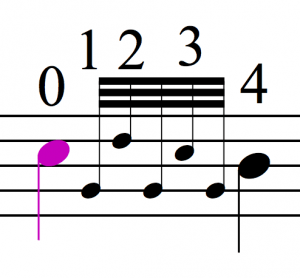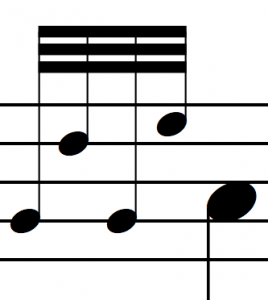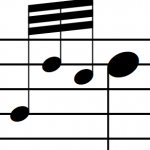Engraining the Idea of Playing the Steps of Embellishments - Andrew Douglas (Basic) - July 2012

Embellishments are extremely tricky as we learn to play bagpipes. We're talking - extremely tricky. Even for professional pipers, embellishment "misses" or "flubs" can mean the difference between first place and no placing at all.
The thing that astonishes me the most is - most pipers (of all levels) have no real definition of what an embellishment is, and most have no clear plan when it comes to each of the different possible embellishments. For example: How would you define an embellishment? Having trouble quickly coming up with your response? If so, not to worry! Most of the bagpipe world is in the same boat.
Meanwhile - if you came up with a response, it's likely that it was something along the lines of: "An embellishment is a group of gracenotes played together," or something of the sort. But, this definition is as bad as not having a definition at all!
Why?
Well, it's because it's impossible to have a group of gracenotes! Gracenotes by nature need a subsequent melody note to be possible. (If you need proof of this, try playing a G gracenote only, with nothing before or after. Pretty hard!)
Therefore, the true definition of an embellishment is (or at least, this is how we define it here at the Dojo):
"An embellishment is a rapid-fire grouping of melody notes and gracenotes"
Nomenclature
So, now that we've defined an embellishment smartly, we can start to ask: "Ok, what are these combinations, and how do we think about them in the best way?"
For this, we've developed a sort of Dojo "Nomenclature" for writing the steps of embellishments. The steps are numbered in order, and follow the exact same formatting each and every time.
Some examples:
A Light D Throw:
- 1) Play Low G
- 2) D Gracenote to C (remembering that a gracenote must have a subsequent melody note!)
- 3) Play D
E Doubling:
- 1) G Gracenote to E
- 2) F Gracenote on E
See how this works? We go into a lot more depth in the class below. Check it out now!!
Course Name: Technique Development
Class Name: Engraining the Idea of Playing the Steps of Embellishments
Class Instructor: Andrew Douglas
Date of Original Live Class: Monday, July 16th, 2012 at 5:30pm
Description: Playing the steps of every embellishment gives you the true control that you need as you play. Imagine a world with no crushed or sloppy movements, PLUS the power to bring tons of music out of every embellishment...
Access This Class Recording:
This class link is restricted to those with a 'Basic' membership or above. Don't worry though - you can have access to this class in 3 minutes or less! Click here to purchase your membership now!








My teacher told me when I started that an 'embellishment' (in this context) is an adornment, normally using a single or series of gracenotes, that makes the transition between two melody notes (or two phrases) more 'interesting' or 'pleasing to the ear'. There are also some follow on advantages: they can emphasise a phrase, or emphasise the transition between phrases; they can promote good timing, allowing the musicality od the tune to be fully expressed; and when you are as good as John McColl at writing tunes, all these things come together and actually make the tune easier to play. Longer than your definition I know, but I felt inspired to write! Paul
The Piper's Dojo has greatly improved my plying, my understanding of the music and my music vocabulary. The classes are spot on in developing good piping habits. The archives contain a treasure of instructions.